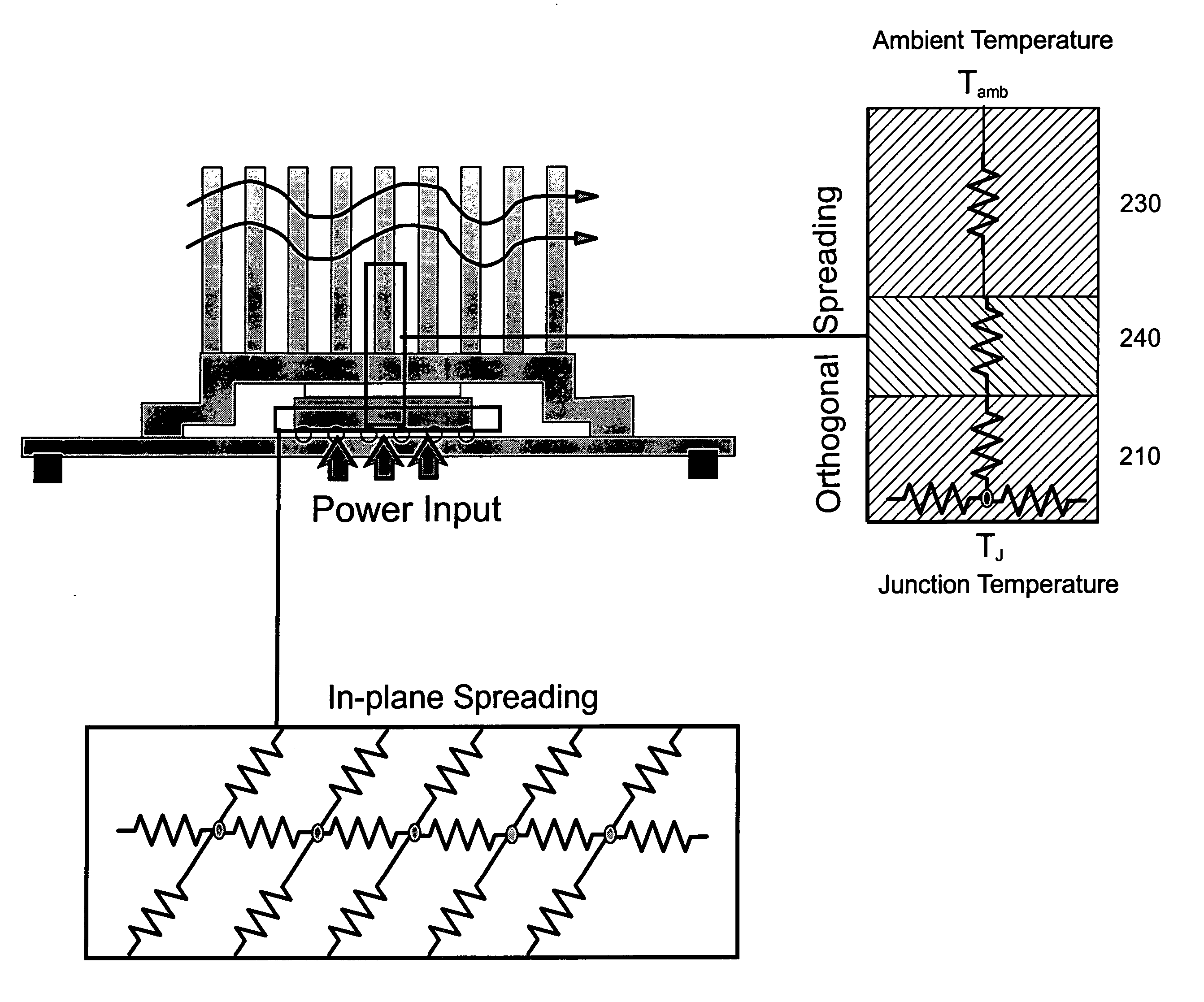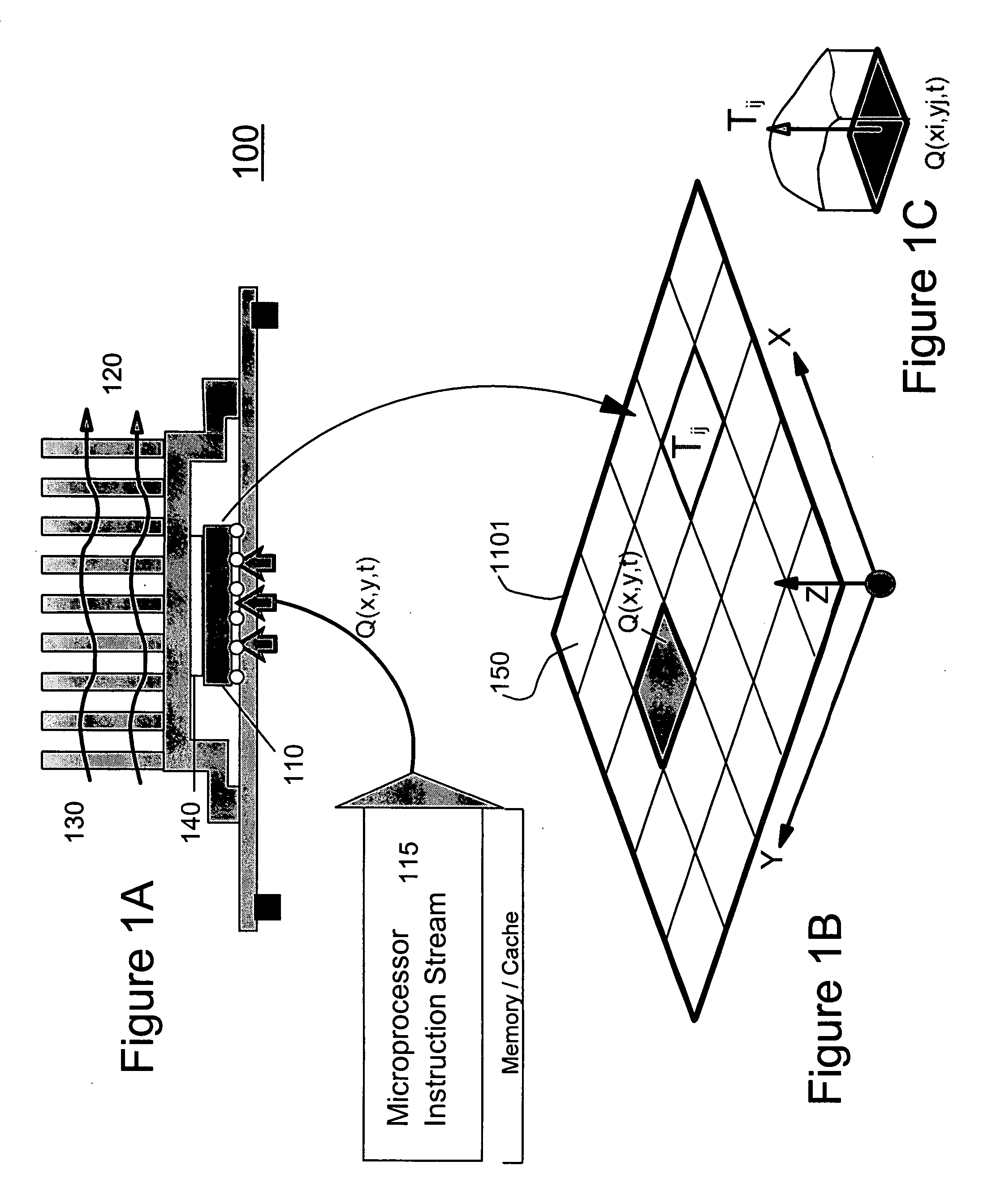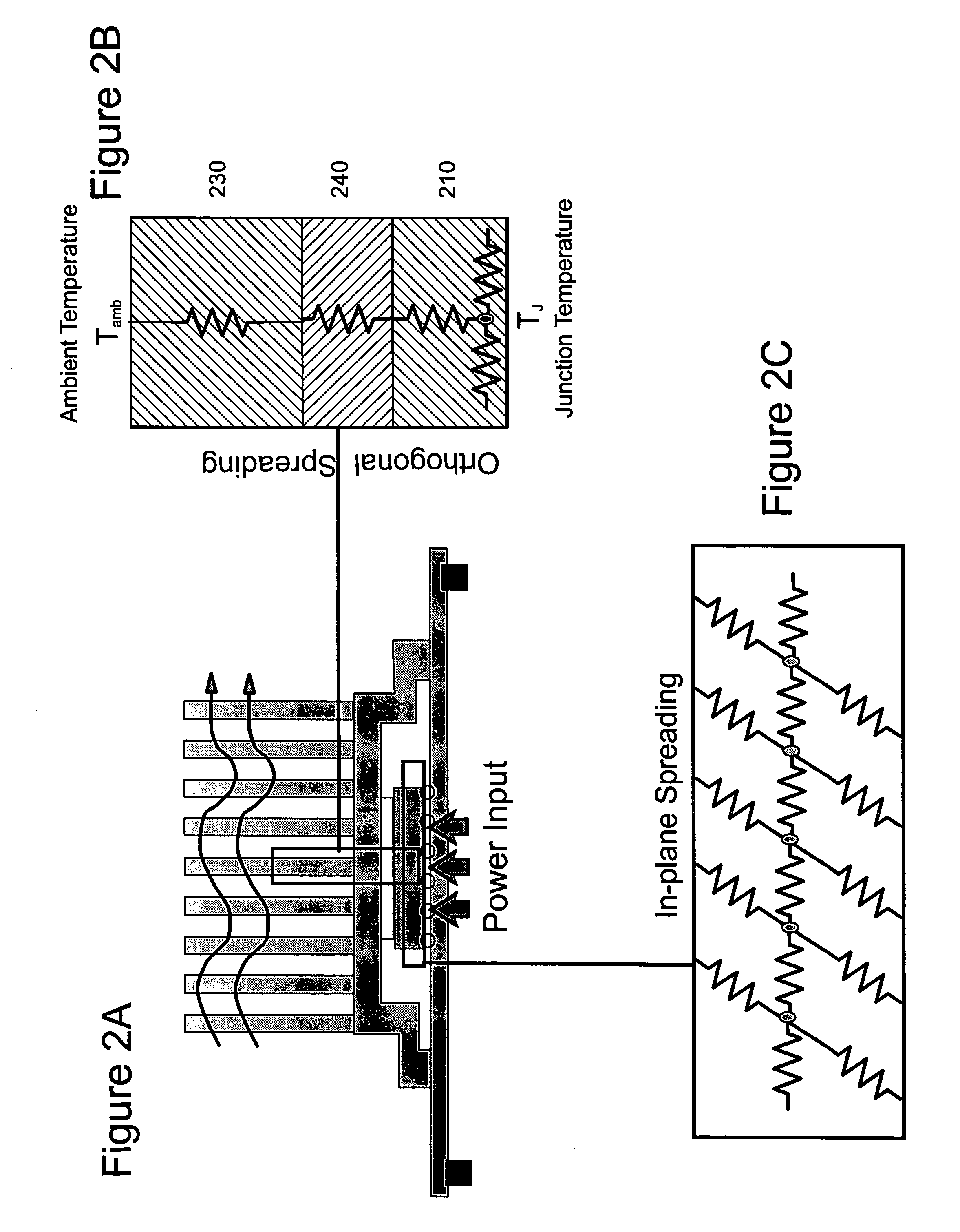Method and system for real-time estimation and prediction of the thermal state of a microprocessor unit
a microprocessor unit and thermal state technology, applied in the field of real-time estimation and prediction of the thermal state of an electronic device, can solve the problems of thermal, inefficient, reducing the integrity of the chip, and not having the capability to extract the spatial distribution of temperatur
- Summary
- Abstract
- Description
- Claims
- Application Information
AI Technical Summary
Benefits of technology
Problems solved by technology
Method used
Image
Examples
Embodiment Construction
[0075] Referring now to the drawings, and more particularly to FIGS. 1A-20, there are shown exemplary embodiments of the method and structures according to the present invention.
Exemplary Embodiment
[0076]FIG. 1 A shows a conventional cooling system 100 in which processor circuit 110 switching is driven by a sequence of an instruction set 115, and the heat flux 120 generated by the V(voltage)-I(current) product (due to a transistor switching operation) is eventually conducted to a heat sink 130 through a thermal interface material (TIM) 140. As shown and as understood, the heat flux will be spatially-distributed, unsteady heat flux.
[0077] The processor chip 110 itself is about 20 mm×20 mm in area with a thickness of about 500 um. FIG. 1B shows the bottom of a silicon surface 1101 of the chip 110 with active devices thereon. The heat generating surface 1101 is demarcated by a contiguous set of rectangles or squares 150 in the X-Y plane, as shown in FIG. 1B.
[0078] A lumped paramete...
PUM
| Property | Measurement | Unit |
|---|---|---|
| Power consumption | aaaaa | aaaaa |
| thickness | aaaaa | aaaaa |
| thickness | aaaaa | aaaaa |
Abstract
Description
Claims
Application Information
 Login to View More
Login to View More - R&D
- Intellectual Property
- Life Sciences
- Materials
- Tech Scout
- Unparalleled Data Quality
- Higher Quality Content
- 60% Fewer Hallucinations
Browse by: Latest US Patents, China's latest patents, Technical Efficacy Thesaurus, Application Domain, Technology Topic, Popular Technical Reports.
© 2025 PatSnap. All rights reserved.Legal|Privacy policy|Modern Slavery Act Transparency Statement|Sitemap|About US| Contact US: help@patsnap.com



